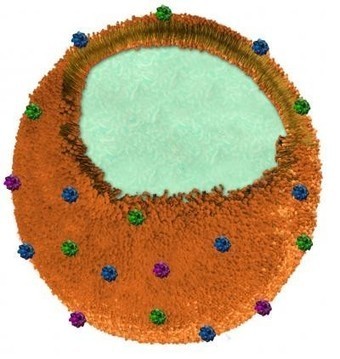Developed by scientists at the University of California, San Diego, these tiny sponges mimic red blood cells, and are able to soak up lethal toxins – including snake venom and bacteria – from the bloodstream.
The nanosponges are made up of a biocompatible polymer core, which is coated with segments of the host’s red blood cell membranes. That coating fools the immune system into identifying the sponges as the body’s own blood cells, so it doesn’t attack them. Because each nanosponge is 3,000 times smaller than a red blood cell, the harvested membrane of one cell provides enough material to coat thousands of sponges.



 Your new post is loading...
Your new post is loading...














